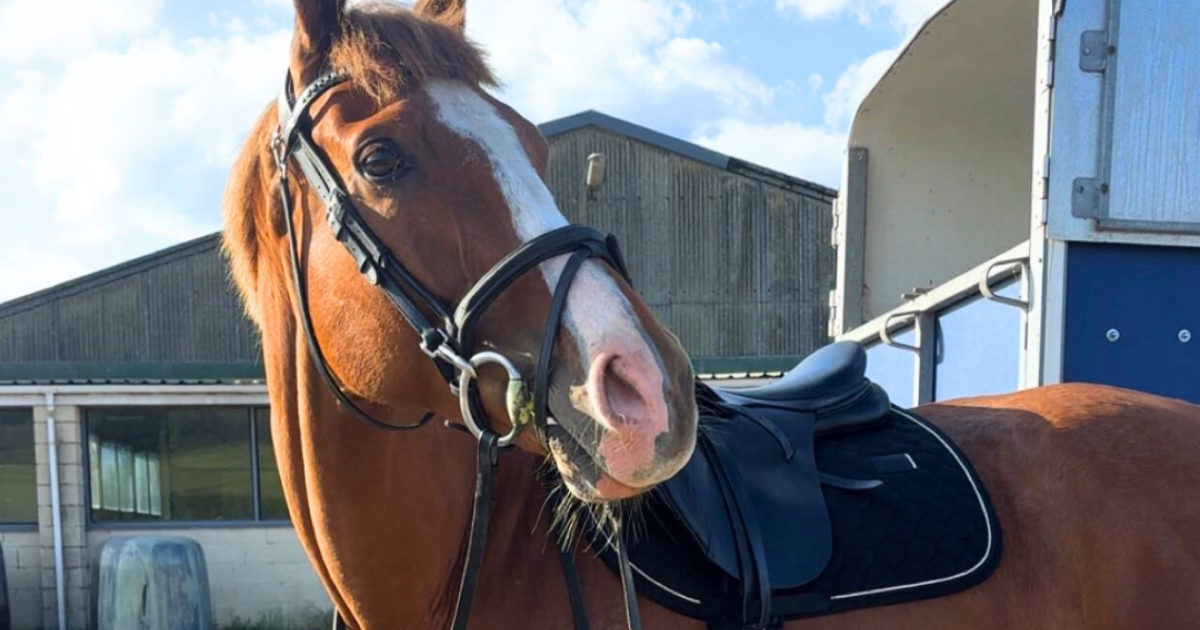A Brief History Of The Saddle & Stirrups
The riding saddle is one of the most important pieces of tack for a rider, providing comfort and stability while riding. A good riding saddle will also help the horse to carry the rider’s weight in a way that is comfortable for both horse and rider.
There are many different horse saddles for sale that are available on the UK market today, from second-hand saddles, and basic workhorse saddles to sophisticated display horse saddles. Riding horse saddles UK are also available in a variety of materials, including leather, synthetic materials, and even cloth.
When choosing a riding saddle, it is important to take into account the type of riding you will be doing, as well as the size and shape of your horse. It is also important to find a riding saddle that is comfortable for you as the rider.
Saddles were first developed and created as early as around 800 BCE. The earliest saddles were probably little more than pads placed on the backs of horses, but over time, they evolved into more complex pieces of tack. The first effective stirrup most likely appeared about 1,000 years later, around 200-300 CE. It is believed that the stirrup was invented in Asia, though the exact location is unknown. No one really recognizes who produced the stirrup or even where the inventor lives in Asia. The stirrup was a game-changer for riding, as it allowed riders to stay on their horses even during fast movements or rough terrain.
Saddles are useless without the girth.
The girth is a strap that goes around the horse's barrel, holding the horse saddle UK in place. The first girths were most likely just strips of hiding or cloth tied around the horse's barrel. Today, there are a variety of different girths available, made from different materials and designed for different riding disciplines.
However, when linked with a girth to secure it to your horse, the horse saddle UK is an excellent piece of horse tack that is evolving over time.
Riders constructed the leather pad from the initial soft pad, to which improvements may be produced with rolls of sewn fabric and tightly packed leather panels.
The use of leather opened up the horse saddles' potential.
The capability to stretch wet leather over a structure and compress it generated a saddle that was far tougher and more durable than cloth padding. The leather was then placed over a cushioned wooden former, which became the saddle tree's origin.
Until the development of stirrups, a rider seated in a frame saddle would have no means of restraining himself against the pressure of his own or other opponents' attacks, nor of keeping a balance.
What were saddles used for before?
According to one historian, the development of horse saddle use throughout battle is divided into three different periods:
- The first is that of the charioteer.
- The second is with the seated warrior, who clutches his steed with his knees.
- Third, the rider must be equipped with stirrups.
The riding saddle and stirrups were a Chinese invention around the first century.
The advantages it gave the cavalryman were so tremendous that its use expanded across the Central Asian steppes, and gradually the stirrup was carried to Europe by Mongol tribesmen.
The first documented record of the saddle stirrup originates from 580 A.D. when the Byzantine emperor's army manual acknowledges the necessity of stirrups.
This innovative piece of equipment was so essential that some argue that its introduction established a framework for European feudalism.
This would be the backstory wherein the current saddle arose, to provide a stable seating from which to engage or fight a war at a rapid pace.
The English saddle was an updated version of the more heavy, less comfortable saddles.
However, the connection point for stirrup leathers generally results in the amount of weight being handled close to the horse's shoulders and wither, which would prone to conflict with overall smooth and efficient movements.
The ongoing development of the synthetic tree enables far increased flexibility than just the fixed wooden tree.
Treeless saddles.
The stallion's movements were softer, adjustments were better, and the stallion was essentially more comfortable and secure.
After about three rides, the practice of shifting away from the mount had gone, substituted by grace and poise.
Riding convenience was also outstanding, and while the treeless seat lacks the depths that fixed tree saddles provide, the connection with the horse was exceptional.
With long-range endurance, riders progressively using treeless saddles succeed. It appears that many more horses will experience totally flexible suppleness in the future.
Modern-day saddles.
Now, there are a wide range and varieties of horse saddles for sale. Every rider in the modern world may actually afford a horse saddle UK that's been tailored specifically for them and their horse, with the rider's body weight, structure, gender, and leg length being considered, as well as the tree and under panels of the horse saddle UK moulded to suit the horse. However, the average person is unlikely to be able to do so. The alternative is to return to the pad-style saddle, which is exactly what has occurred or to purchase a second-hand saddle, which is also an excellent option.
Horse saddles for sale like the second-hand saddle are relatively easy to find, and you'll be able to get a good quality second-hand saddle without spending too much money. A second-hand saddle is a great way to get a good quality saddle at a fraction of the price, and it's also a great way to get a saddle that's comfortable for both you and your horse.
There are a few things to keep in mind when looking for a second-hand saddle, such as the type of riding you'll be doing, the size of your horse, and the condition of the saddle. It's important to make sure that the second-hand saddle you purchase fits both you and your horse properly, as an ill-fitting saddle can cause serious problems for both you and your horse. If you're unsure about how to properly fit a saddle, it's always best to consult with a professional.
The riding saddle has a long and complicated history, from its origins as a seat for charioteers to its current iterations as a tool for both riding and warfare. Through its many forms, the saddle has evolved to become more comfortable and functional for both rider and horse. A riding saddle is a necessary item for riding horses as it helps the rider to stay on the horse and provides comfort for both the horse and the rider. The history of saddles is interesting, and it is clear that they have evolved over time to become the comfortable and practical items that they are today. With the advent of new materials and technologies, the saddle is sure to continue evolving in the future. There are many different horse saddles for sale now, so there is sure to be one to suit every rider and horse!










